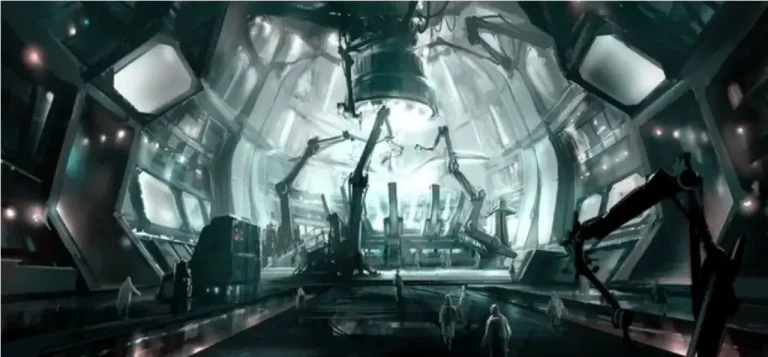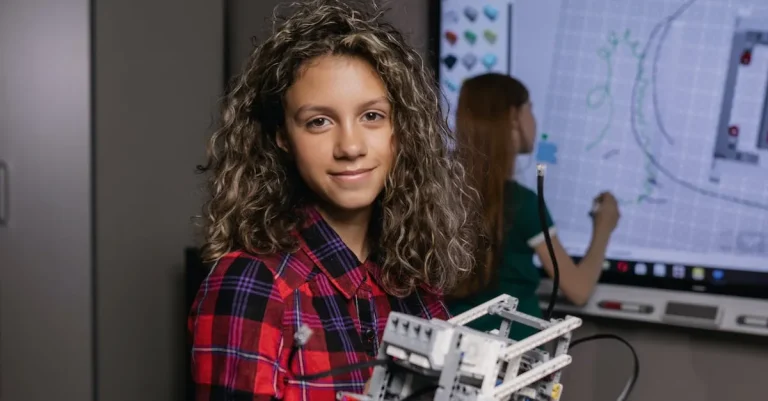Could Science Create A Real Life Neko Girl?
Since the dawn of anime and manga, the alluring neko girl has captured the imagination of fans worldwide. With her cute cat ears and tail, she blends feline and human features into an endearing fantasy. But could science ever bring this popular character to life?
If you’re short on time, here’s a quick answer to your question: While genetic engineering may one day allow for human-animal hybrids, creating an actual neko girl remains firmly in the realm of science fiction for now.
In this article, we’ll explore the possibilities and limitations around genetically engineering catgirls. We’ll look at the relevant areas of science, like animal hybrids and human gene editing. We’ll also consider the ethical concerns that would need to be addressed before anyone could actually try making a real neko girl.
The Allure and Origins of Neko Girls
Neko girls, also known as catgirls, have become a popular concept in the world of anime and manga. These endearing characters possess both human and feline features, captivating the hearts of fans worldwide.
The appeal of neko girls can be attributed to various factors, including their cute and playful nature, their striking appearance, and the intriguing blend of human and animal characteristics they embody.
Popularity in anime and manga
Neko girls have gained immense popularity in the realm of anime and manga, captivating audiences with their charm and distinctive personalities. These characters often possess cat-like attributes such as ears and a tail, while maintaining their human form.
Their mischievous nature and playful antics make them lovable and relatable to fans of all ages.
One of the most well-known neko girls in anime is the character Koneko Toujou from the series “High School DxD.” With her cat-like ears and tail, Koneko quickly became a fan favorite. Another beloved catgirl character is Blair from the anime “Soul Eater,” who not only possesses cat-like features but can also transform into a cat.
These characters, along with many others, have contributed to the widespread appeal of neko girls in the anime and manga community.
Inspiration from catgirls in mythology and folklore
The concept of neko girls draws inspiration from catgirls found in various mythologies and folklore around the world. In Japanese folklore, there are tales of “Bakeneko” and “Nekomata,” cat-like creatures that possess supernatural abilities and can transform into human form.
These mythical creatures have influenced the portrayal of neko girls in anime and manga, adding a touch of mystique and enchantment to their characters.
Furthermore, the fascination with cat-like beings can also be seen in other cultures. In ancient Egyptian mythology, the goddess Bastet was depicted with the head of a lioness or domestic cat. She was revered as a goddess of protection, fertility, and joy.
The influence of these mythological and cultural references has helped shape the concept of neko girls, infusing them with a sense of allure and mystery.
Animal Hybrids in the Lab
Scientists have always been fascinated by the possibility of creating hybrid animals in the lab. From mules to ligers, there have been numerous examples of successful interbreeding between different species.
These hybrids are created through careful artificial insemination or by introducing the embryos of one species into the womb of another. This process allows for the combination of genetic traits from two different animals, resulting in a unique hybrid offspring.
Examples of hybrids like mules and ligers
One of the most well-known examples of a hybrid animal is the mule, which is a cross between a male donkey and a female horse. Mules are known for their strength and endurance, making them popular working animals in agriculture and transportation.
Another famous hybrid is the liger, which is a cross between a male lion and a female tiger. Ligers are larger and more powerful than both lions and tigers, and they have a unique coat pattern.
These hybrid animals have fascinated scientists and the general public alike, as they showcase the possibilities of combining different species to create new and interesting creatures. However, it’s important to note that these hybrids are usually infertile, meaning they cannot reproduce and create their own offspring.
Chimeras made through genetic modification
While natural hybrids occur through interbreeding, scientists have also been able to create chimeras through genetic modification. Chimeras are organisms that contain cells from different species. This is achieved by introducing foreign DNA into the embryo of an animal, resulting in a mix of genetic material from two or more species.
One example of a chimera is the glow-in-the-dark cat, which was created by injecting jellyfish DNA into a cat embryo. The resulting cat had glowing green fur under ultraviolet light. Another fascinating example is the spider-goat, which was created by introducing spider genes into the DNA of a goat.
This modified goat produces milk containing spider silk proteins, which can be used to create strong and flexible materials.
Limitations of crossing different species
While the creation of animal hybrids and chimeras is fascinating, there are limitations to crossing different species. The genetic compatibility between species is a major factor in determining whether successful interbreeding can occur.
In many cases, the genetic differences between species are too great to overcome, resulting in failed attempts at hybridization.
Furthermore, even if a hybrid is successfully created, there are often health and fertility issues. Hybrid animals are often infertile or have reduced fertility, making it difficult for them to reproduce and create a stable population.
This limitation poses challenges when it comes to the long-term viability of hybrid animals.
Gene Editing in Humans
Gene editing, a revolutionary field in science, has garnered significant attention in recent years. With the advent of CRISPR technology, scientists have gained the ability to modify genes with unprecedented precision.
The potential applications of gene editing in humans are vast and varied, ranging from curing genetic diseases to enhancing physical and cognitive abilities.
CRISPR technology for editing genes
CRISPR-Cas9, the most widely used gene editing tool, allows scientists to target and modify specific genes within an organism’s DNA. This technology utilizes a guide RNA molecule to direct the Cas9 enzyme to the desired location in the genome, where it can make precise edits.
The simplicity, efficiency, and versatility of CRISPR have made it a game-changer in the field of genetic engineering.
Scientists are exploring the potential of CRISPR technology in treating genetic disorders like cystic fibrosis, sickle cell anemia, and muscular dystrophy. By correcting or replacing faulty genes, researchers aim to cure these diseases at their root cause, offering hope to millions of affected individuals.
Ethical concerns and regulation around human gene editing
While the prospects of gene editing are exciting, they also raise ethical questions and concerns. The ability to alter human genes brings with it ethical considerations about the potential misuse of this technology.
Questions about the boundaries of gene editing and the potential for creating “designer babies” have sparked intense debates among scientists, policymakers, and the public.
As a result, regulations and guidelines have been put in place to ensure responsible use of gene editing in humans. International committees, such as the International Summit on Human Gene Editing, have been formed to address the ethical, legal, and social implications of gene editing.
These committees aim to strike a balance between scientific progress and ethical considerations, ensuring that gene editing is used for the benefit of humanity.
Safety risks of modifying human genes
While gene editing holds immense promise, there are potential safety risks associated with modifying human genes. Off-target effects, where the CRISPR system unintentionally modifies genes other than the target, remain a concern.
Scientists are actively researching ways to minimize these off-target effects and improve the accuracy of gene editing techniques.
Additionally, the long-term consequences of gene editing on future generations remain unclear. It is crucial to conduct thorough research and rigorous testing to understand the potential risks and ensure the safety of any human gene editing interventions.
Making a Catgirl – Possibilities and Obstacles
Many anime and manga enthusiasts have wondered if it would be possible to create a real-life Neko Girl, a half-human, half-cat hybrid creature. While this may seem like something straight out of science fiction, recent advancements in genetic engineering and biotechnology have brought us closer to the realm of possibility.
However, there are several challenges and ethical considerations that must be addressed before such a creation can become a reality. Let’s explore the possibilities and obstacles involved in making a Catgirl.
Cat traits that would need to be engineered
To create a Catgirl, scientists would need to engineer specific cat-like traits into a human being. These traits could include feline ears, a tail, sharp retractable claws, enhanced night vision, and heightened agility.
While some of these traits may seem achievable through genetic modification, others, such as the ability to purr or communicate through meowing, would be more challenging to replicate.
Scientists would need to identify the specific genes responsible for these cat-like traits and find a way to incorporate them into the human genome. This would require a deep understanding of both human and feline genetics, as well as advanced gene-editing techniques like CRISPR.
While progress has been made in modifying genes in animals, the task of engineering these traits in a human would be unprecedented and highly complex.
Challenges of combining human and non-human DNA
One of the main obstacles in creating a Catgirl is the challenge of combining human and non-human DNA. The genetic makeup of humans and cats is significantly different, with varying numbers of chromosomes and distinct gene sequences.
The compatibility of these two genomes is uncertain and may lead to unpredictable outcomes.
Furthermore, the introduction of non-human DNA into a human genome raises concerns about potential health risks and unintended consequences. It is essential to consider the long-term effects of such genetic modifications on the individual’s physical and mental well-being.
Extensive research and rigorous testing would be required to ensure the safety and ethical implications of creating a hybrid creature.
Questionable ethics of creating human-animal hybrids
While the scientific and technical aspects of creating a Catgirl are intriguing, the ethical considerations surrounding human-animal hybrids are complex and controversial. The creation of a hybrid creature raises questions about the boundaries between species and the moral implications of manipulating life forms.
There is ongoing debate regarding the ethical limits of genetic engineering and whether it is appropriate to modify the fundamental nature of living beings. Critics argue that creating human-animal hybrids blurs the line between humans and animals, potentially leading to a devaluation of human life and dignity.
It is crucial to engage in a broader societal discussion to address these ethical concerns before pursuing such endeavors.
When Fantasy Meets Reality
Imagine a world where mythical creatures come to life. Where magical beings exist alongside humans, blurring the lines between fantasy and reality. One popular fantasy concept that has captured the imagination of many is the idea of a “neko girl” – a hybrid between a human and a cat.
While this concept has been predominantly explored in anime, manga, and other forms of media, could science one day make this fantasy a reality?
Social implications of creating neko girls
The creation of real-life neko girls would undoubtedly have far-reaching social implications. On one hand, it could be seen as a groundbreaking scientific achievement, showcasing the incredible potential of genetic engineering and biotechnology.
It could pave the way for advancements in human-animal hybrids, potentially leading to medical breakthroughs and advancements in understanding genetic diseases.
However, there are also ethical concerns surrounding the creation of neko girls. Critics argue that it would blur the line between humans and animals, raising questions about the treatment and rights of these hybrid beings.
Additionally, there may be societal backlash and discrimination against neko girls, as they would be seen as “unnatural” or “freaks of science”. This raises important questions about the ethical responsibilities of scientists and the potential consequences of playing with the very fabric of life.
Do the benefits outweigh the risks and concerns?
The debate surrounding the creation of neko girls ultimately comes down to weighing the potential benefits against the risks and concerns. On one hand, the medical advancements and scientific breakthroughs that could result from this research are undeniably exciting.
The ability to manipulate and combine genetic material could have far-reaching implications for human health and well-being.
On the other hand, the ethical concerns cannot be ignored. The potential for mistreatment and discrimination against neko girls raises important questions about the responsibility of scientists and the potential consequences of their actions.
It is crucial to have robust regulations and ethical guidelines in place to ensure that any research in this area is conducted responsibly and with the well-being of the subjects in mind.
At present, the creation of real-life neko girls remains firmly in the realm of fantasy and science fiction. While advancements in genetic engineering and biotechnology continue to push the boundaries of what is possible, there are still many scientific and ethical hurdles to overcome before we can even begin to consider bringing such creatures to life.
Until then, we can continue to enjoy the fantastical world of neko girls in our favorite works of fiction.
Conclusion
While the prospect of creating real-life neko girls intriguing yet controversial, we are still far from having the scientific knowledge and technological capabilities required. Genetic engineering currently faces too many technical limitations and ethical barriers.
So for anyone dreaming of having their very own catgirl, she will likely remain in the realm of fantasy and fiction for the foreseeable future.







